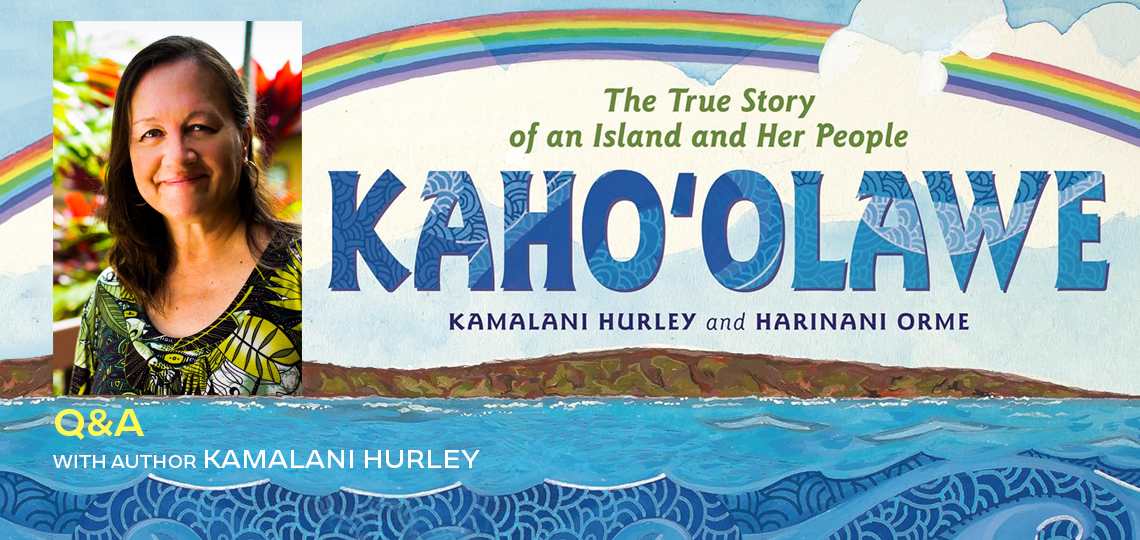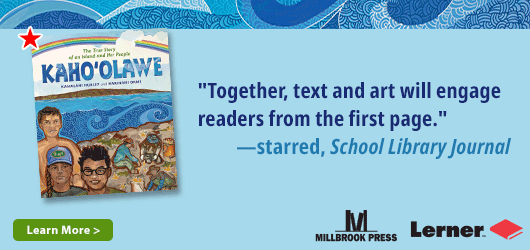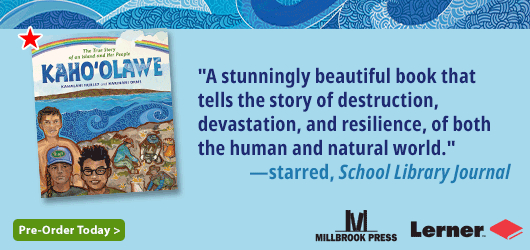Meet Kamalani Hurley, Author of Kaho'olawe

A Conversation with Kamalani Hurley, Author of Kaho’olawe: The True Story of an Island and Her People
Hawaii may be the youngest and most remote of our states but you’d be wrong to think its history is any less rich than the other 49. Indeed, the 137 tropical islands in the Hawaiian archipelago—all more than 2,000 miles away from the US mainland—and 2 official languages, surely make Hawaii the most exotic and unique of states. To say nothing of the beauty of its volcanoes, beaches, and coral reefs.
Distant, yes, but Native Hawaiians do share a great deal with the Indigenous tribes and peoples spread across the North American continent: a troubled relationship with the US government beginning long before statehood.
Kamalani Hurley joins us today to talk about Kaho’olawe: The True Story of an Island and Her People, her new picture book about one very special Hawaiian island that has gone through periods of loss, erasure, sacrifice, and finally, restoration.
In the interview below, Foreword‘s Children’s Book Editor Danielle Ballantyne notes that the history offered in Kaho’olawe “traverses age groups” for the benefit of readers young and old—an accomplishment that is rare in illustrated books for children.
Enjoy!
While most people are likely at least somewhat aware of the Hawaiian Islands’ history with American imperialism and military occupation, the history of the island of Kaho’olawe specifically is not often discussed in-depth. What drew you to spotlight the island and its tumultuous history?
The story Kaho’olawe is a rich and fascinating one. Beginning with its settlement by ancient Polynesian voyagers, it encompasses the introduction of destructive forces, the movement to protect the island, and more recently, ongoing cultural and environmental restoration efforts. The story is a testament to the courage and character of the Native Hawaiian people.
Though you have experience with student journalism and teaching college students, this is your first children’s picture book. Why did you feel this story needed to be shared with that audience in particular?
Originally, the story was going to be for middle graders and young adults. But because the history is relatively unknown outside of Hawai’i, I thought perhaps introducing the story to younger audiences and their grownups was the way to go. Ultimately, it is about more than the devastation of an island. It’s about hope, resilience, and resourcefulness. Above all, Kaho’olawe is proof that no obstacle is too great with commitment, cooperation, knowledge, and faith.
Were you fascinated with Hawaii’s history as a child, or did that interest grab you later?
My love of history dates to the early 1970s when I was in high school. The 1970s was a time of revolution for women, Native Americans, and LGBTQ+ folks, among other groups. The Hawaiian Renaissance was a wave of activism that gripped my Native Hawaiian community. Most profoundly, we finally understood that the history we’d learned in school wasn’t complete or accurate. Historically, books about Hawai’i were written by people outside the community. As well-meaning as they might’ve been, they told our story through their points of view, and that often didn’t match what our people had experienced.
I love the way the book traverses age groups by supplementing the main story with more in-depth historical knowledge to add context for older children or reading helpers. Was that something you wanted to do from the outset, or did the concept develop as you worked on the book?
I wanted to make the story as accessible as possible to my two audiences. My younger audience will find easier, more approachable language that uses few words. Older readers will find sidebars on each spread that help provide much-needed background information. Although sidebars are usually found in the backmatter of picture books, editor extraordinaire Carol Hinz and I knew that the story would lose its immediacy without easy access to the historical and cultural context.
You have generously decided to donate all proceeds from your book sales to the Protect Kaho’olawe ’Ohana. Talk to us a bit about this organization and why supporting its work is so important to you.
The story of Kaho’olawe really is about the people of Hawai’i—native and our non-native allies—who believe that the island has a greater purpose than to be a military training area. The very first activists of 1976 were members of the grassroots Protect Kaho’olawe ‘Ohana (PKO). The ʻOhana continues its work to this day to restore the islandʻs ecosystem, revive cultural protocols and practices, and protect the island from commercial development. Donating my author proceeds is the pono—correct—thing to do. When I think of all of the obstacles and frustrations activists faced over the years, I am awestruck at the strength of their resolve. Honestly, the story of Kaho’olawe could have turned out much differently without PKO’s unwavering commitment to aloha ’āina—deep love of the land—and to nonviolence over the 50+ year fight.
To many, Hawaii is a dream vacation destination: a paradise of palm trees and sandy beaches; overtourism and military occupation are not often at the forefront of the prospective traveler’s mind. What are some things you think every tourist should research or consider before visiting the islands in order to best respect the land and its history?
Visitors come here for a variety of reasons, and I am not the Tourist Police. But I think visitors might find their stay more enriching if they recognize that Hawaiʻi is our ancestral homeland. Perhaps the best advice I can give is this: a kōlea is a migratory bird (the Pacific golden plover) that flies in, takes whatever it wants, and leaves a mess behind. Donʻt be a kōlea.
Lastly, do you have any other projects brewing that you could share a little about?
Yes! I just finished an audio pronunciation guide for Kaho’olawe which can be found on my website. I also have a picture book biography and a middle grade nonfiction book in the works with Lerner. In addition, I wrote two Moana 2 movie extension stories for Disney Publishing, and one will be included in Disney’s 5-Minute Princess Stories collection of January 2026.
Danielle Ballantyne



